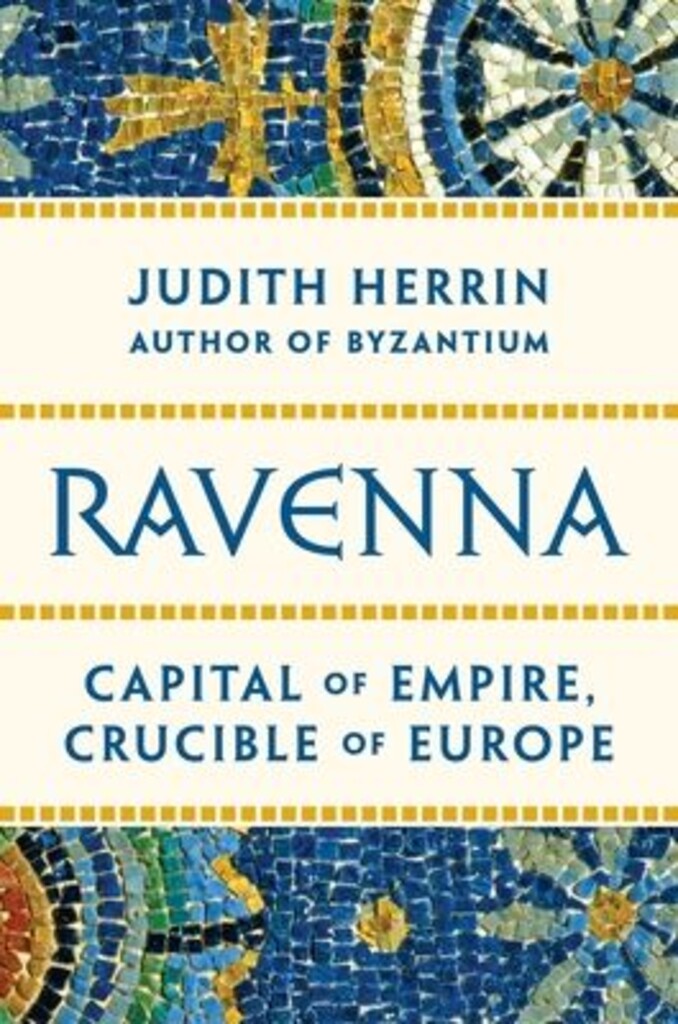
Ravenna : capital of empire, crucible of Europe
Judith Herrin
Bok · Engelsk · 2020 · History.
| Omfang | xxxvii, 536 sider : illustrasjoner, kart
|
|---|---|
| Opplysninger | The emergence of Ravenna as the imperial capital of the West -- Part One: 390-450. Galla Palacidia. Galla Placidia, Theodosian princess -- Honorius (395-423) and the development of Ravenna -- Galla Placidia at the western court (416-23) -- Galla Placidia, builder and empress mother -- Part Two: 450-93. The rise of the bishops. Valentinian III and Bishop Neon -- Sidonius Apollinaris in Ravenna -- Romulus Augustulus and King Odoacer -- Part Three: 493-540. Theoderic the Goth, Arian King of Ravenna. Theoderic the Ostrogoth -- Theoderic's kingdom -- Theoderic's diplomacy -- Theoderic the lawgiver -- Amalasuintha and the legacy of Theoderic -- Part Four: 540-70. Justinian I and the campaigns in North Africa and Italy. Belisarius captures Ravenna -- San Vitale, epitome of Early Christendom -- Narses and the Pragmatic Sanction -- Archbishop Maximian, bulwark of the West -- Archbishop Agnellus and the seizure of the Arian churches -- Part Five: 568-643. King Alboin and the Lombard conquest. Alboin invades -- The exarchate of Ravenna -- Gregory the Great and the control of Ravenna -- Isaac, the Armenian exarch -- Agnellus the doctor -- Part Six: 610-700. The expansion of Islam. The Arab conquests -- Constans II in Sicily -- The Sixth Oecumenical Council -- The Anonymous Cosmographer of Ravenna -- Part Seven: 685-725. The two reigns of Justinian II. The Council in Trullo -- The heroic Archbishop Damianus -- The tempestuous life of Archbishop Felix -- Part Eight: 700-769. Ravenna returns to the margins. Leo III and the defeat of the Arabs -- The beginnings of Iconoclasm -- Pope Zacharias and the Lombard conquest of Ravenna -- Archbishop Sergius takes control -- Part Nine: 756-813. Charlemagne and Ravenna. The long rule of King Desiderius -- Charles in Italy, 774-87 -- Charles claims the stones of Ravenna -- Conclusion: The glittering legacy of Ravenna.. - In 402 AD, after invading tribes broke through the Alpine frontiers of Italy and threatened the imperial government in Milan, the young Emperor Honorius made the momentous decision to move his capital to a small, easy defendable city in the Po estuary: Ravenna. From then until 751 AD, Ravenna was first the capital of the Western Roman Empire, then that of the immense kingdom of Theoderic the Goth, and finally the centre of Byzantine power in Italy. In this engrossing account Judith Herrin explains how scholars, lawyers, doctors, craftsmen, cosmologists and religious luminaries were drawn to Ravenna where they created a cultural and political capital that dominated northern Italy and the Adriatic. As she traces the lives of Ravenna's rulers, chroniclers and inhabitants, Herrin shows how the city became the meeting place of Greek, Latin, Christian and barbarian cultures and the pivot between East and West. The book offers a fresh account of the waning of Rome, the Gothic and Lombard invasions, the rise of Islam and the devastating divisions within Christianity. It argues that the fifth to eighth centuries should not be perceived as a time of decline from antiquity but rather, thanks to Byzantium, as one of great creativity: the period of 'Early Christendom'. These were the formative centuries of Europe. While Ravenna's palaces have crumbled, its churches have survived. In them, Catholic Romans and Arian Goths competed to produce an unrivalled concentration of spectacular mosaics, many of which still astonish visitors today. Beautifully illustrated with specially commissioned photographs, and drawing on the latest archaeological and documentary discoveries, Ravenna: Capital of Empire, Crucible of Europe brings the early Middle Ages to life through the history of this dazzling city.
|
| Emner | |
| Sjanger | |
| Geografisk emneord | |
| Dewey | |
| ISBN | 9780691153438. - 9780691204222
|